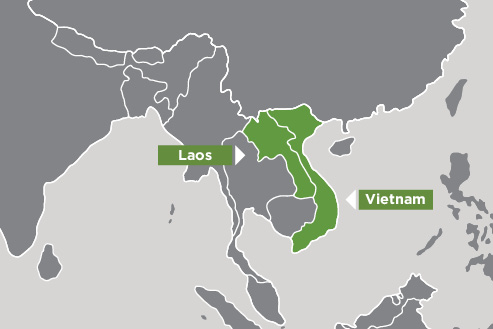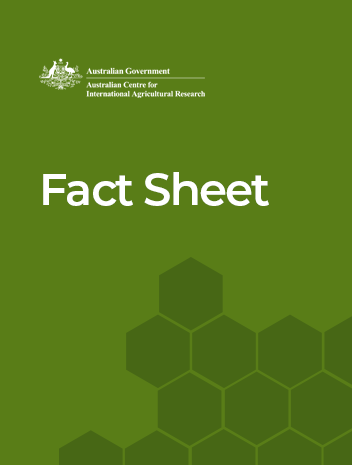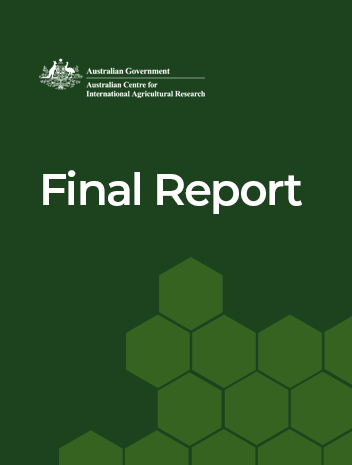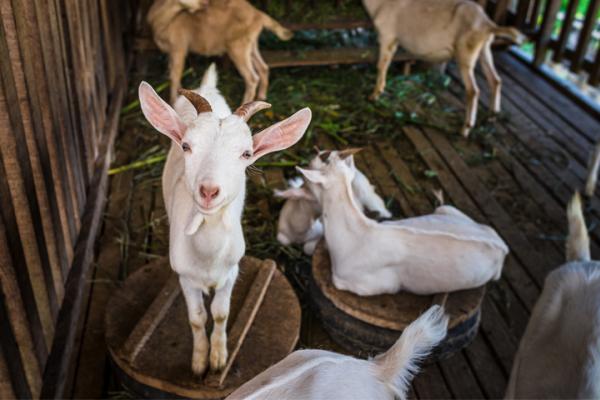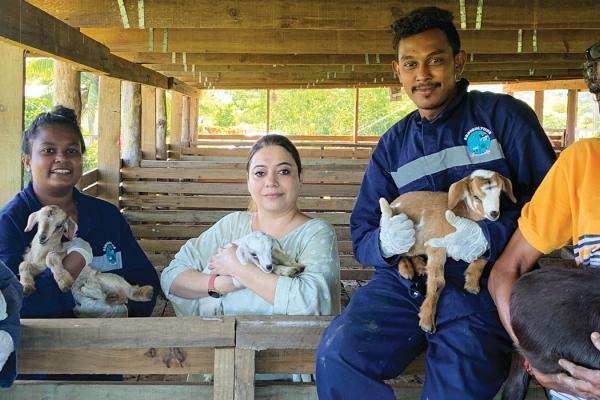Overview
This project aimed to enhance income-generating opportunities for goat-raising households in Lao PDR through the development of productive, environmentally sustainable, socially acceptable and gender-sensitive production systems accessing high-demand markets in Vietnam.
Goat numbers in Lao PDR have increased dramatically in recent years, although population estimates vary greatly. The last Laos Agricultural Census in 2010/11 estimated goat numbers to be 215,600, while current estimates of the current goat population range to 550,000. Previous research has indicated that up to 90% of goats in some regions of Lao PDR are exported to Vietnam, and on average, these goats command a price premium of 30% over Vietnamese crossbred goats.
Demand in Vietnam is likely a function of both human population growth of 19% from 2000 to 2016 and, more significantly, a 228% increase in GDP per capita over the same period. Increasing prosperity is resulting in increases in the consumption of goat meat, which is, to some extent, seen as a ‘luxury’ meat for special occasions.
High mortality is a major constraint, and farmers have identified controlling disease as their most important need. Inbreeding depression has also been identified as a major constraint on productivity by Lao counterparts. There is a need to understand the relative role of goats in farming systems and household economics, including any household risks in changing or expanding goat production and farmer motivations to do so.
Expected outcomes
- Improved understanding of the role of goats in Lao farming systems, their potential to enhance farming incomes over the long term and any risks associated with this.
- Increased use of measurement, recording and assessment against benchmarks as a tool for farmers and advisors.
- Improved productivity and profitability of goat production systems.
- Clarification of the impact of inbreeding, gastrointestinal nematode infection and other animal health syndromes in limiting productivity in village production systems.
- Understanding of Lao domestic and export goat market chains and the attendant constraints, risks and opportunities.
- Knowledge and understanding of the factors influencing consumer preferences for goats in Vietnam, particularly those that underpin the premium for Lao goat.
- Clearer messaging about market needs and specifications.
- Increased exploitation of market information by project stakeholders to increase profitability, manage risk and for future planning.
- Establishment of a National Learning Alliance in place in Lao PDR continuing to improve knowledge and skills on goat production and marketing and their application.
- Improved knowledge and application of gender sensitive approaches by project participants.
- Increased research and advisory capacity through short term training and postgraduate student support.
Summary of outcomes to date
2021–22
- 70 smallholders and 4 larger goat farmers have collaborated with the project for the past 2.5 years.
- Baseline data was collected using Mobile Acquired Data software (CommCare) which produced near real-time findings such as:
- Significant contribution of goats to annual household income (17.4%)
- High annual prevalence of lip and mouth lesions (14.5%) and diarrhoea (11.1%)
- High annual kid mortality of 20.3% and annual kidding rates of 182.1%
- Moderate growth rates in young goats of 52.0 g/day
- Low average doe weight of 21.1 kg (mean age 1.7 years)
- Equal involvement by females and males in goat husbandry
- Moderate worm burdens in goats overall (260 eggs per gram of faeces), predominantly Trichostrongylus spp. (73% of larval speciation).
- High demand from Vietnam for 20-25 kg, 1-year old male Lao goats in good body condition
- To meet market demand, key interventions have been designed and facilitated:
- Increase adoption of forage growing and better housing
- Increasing grazing duration from 5-8 h/day to 9 h/day
- Mineral blocks
- Basic disease prevention and veterinary treatments
- Gender issue awareness
- A follow-up, mid-project survey indicated:
- Increase in annual income from goats of 5.6%
- Increased mean goat herd size by at least 1 goat
- Increased number of farmers grazing cultivating forage plots resulting in 48-minute time savings per day in the rainy season
- Reduced prevalence of ‘Orf virus’
- GPS tracking collars engineered and pilot tested in Laos for 3 months
- Four publications in National Journals and 2 conference presentations



